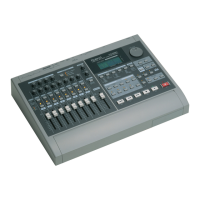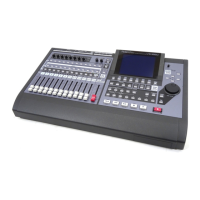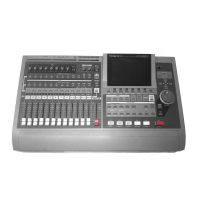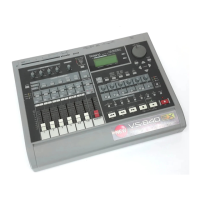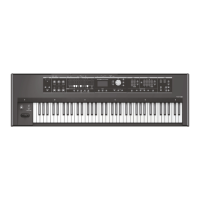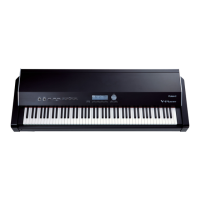Roland VS-2000 Owner’s Manual www.RolandUS.com 193
14—Working with Track Channels
The VS-2000’s track channels control the sound of its hard disk recorder’s tracks. When
you’re recording a track, you listen to its source signal through the corresponding track
channel to ensure you’re hearing what the hard disk recorder is capturing. When you
play back a track, you play it through its track channel.
To learn how to:
• select a V-Track for playback, see Page 127 and Page 149.
• shape a track’s sound, see Chapter 11, starting on Page 147.
• add effects to the track’s sound, see Page 211.
In this chapter, we’ll discuss a few things you might want to do with recorded tracks.
We’ll discuss bouncing. We’ll explain how to route a track channel to a Direct path.
We’ll also provide some guidance on how to prepare your recorded tracks for a final
mix.
Bouncing
“Bouncing” is the process of submixing
one or more already recorded tracks and
recording that submix onto a new track or
a new pair of tracks. There are many
reasons to bounce:
•You bounce when you record your final mix onto your mastering tracks (Page 356).
•You might want to combine a group of related tracks—such as a large set of
individually recorded background vocals, or a couple of instruments whose
textures you’re combining—so that you can work with them as a single object when
you create the final mix.
•You can make your available effects processing power go farther by bouncing tracks
with their intended effects. Once the tracks and effects have been bounced, you’ll
be free to use the effect processors for other jobs in the final mix.
•You might want to create an different-sounding version of a track.
•You can compile the best parts of multiple tracks into a single great one by
bouncing their best pieces together.
When you bounce, you copy the bounced tracks, so the original tracks remain safe and
sound unless you manually erase them. You can return to the original tracks if you need
to do the bounce again or to do some editing or re-recording of the original material.
Though we refer to “bouncing
tracks
” for simplicity’s sake, what you’re really doing
when you bounce is bouncing V-Tracks.
While the following sections describe performing a single bounce, you can use the
same methods to perform multiple, separate bounces simultaneously to save time.
Track 5
Track 4
Track 2
Track 6
Track 1
Track 3
Tracks 7 and 8
VS2000OMUS.book 193 ページ 2004年10月20日 水曜日 午後3時3分

